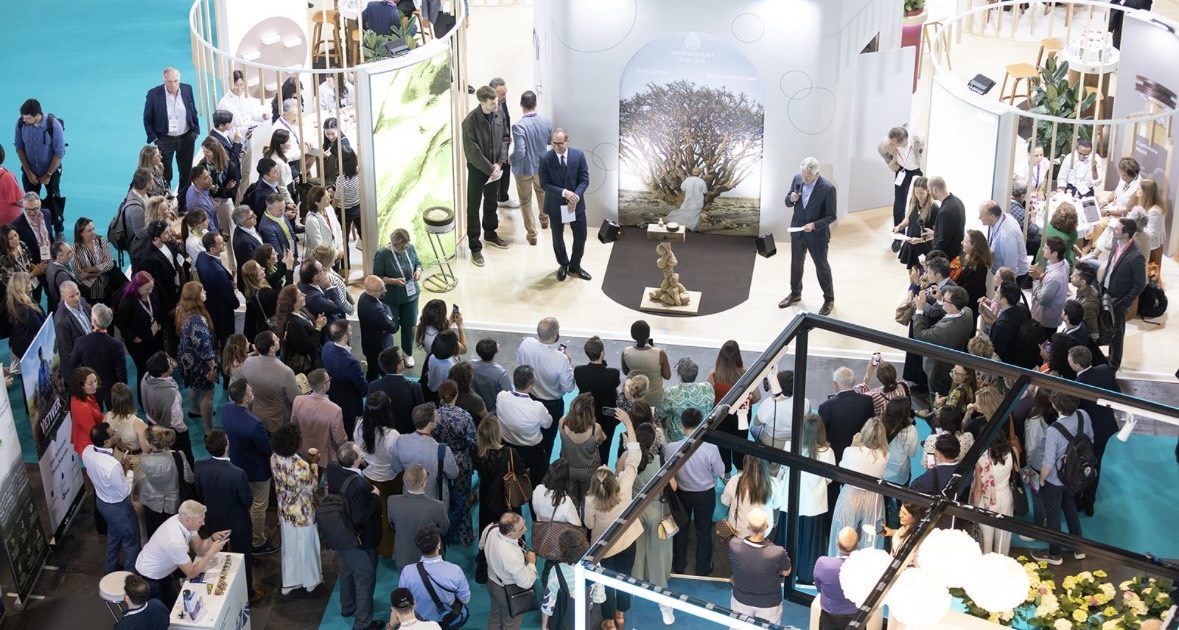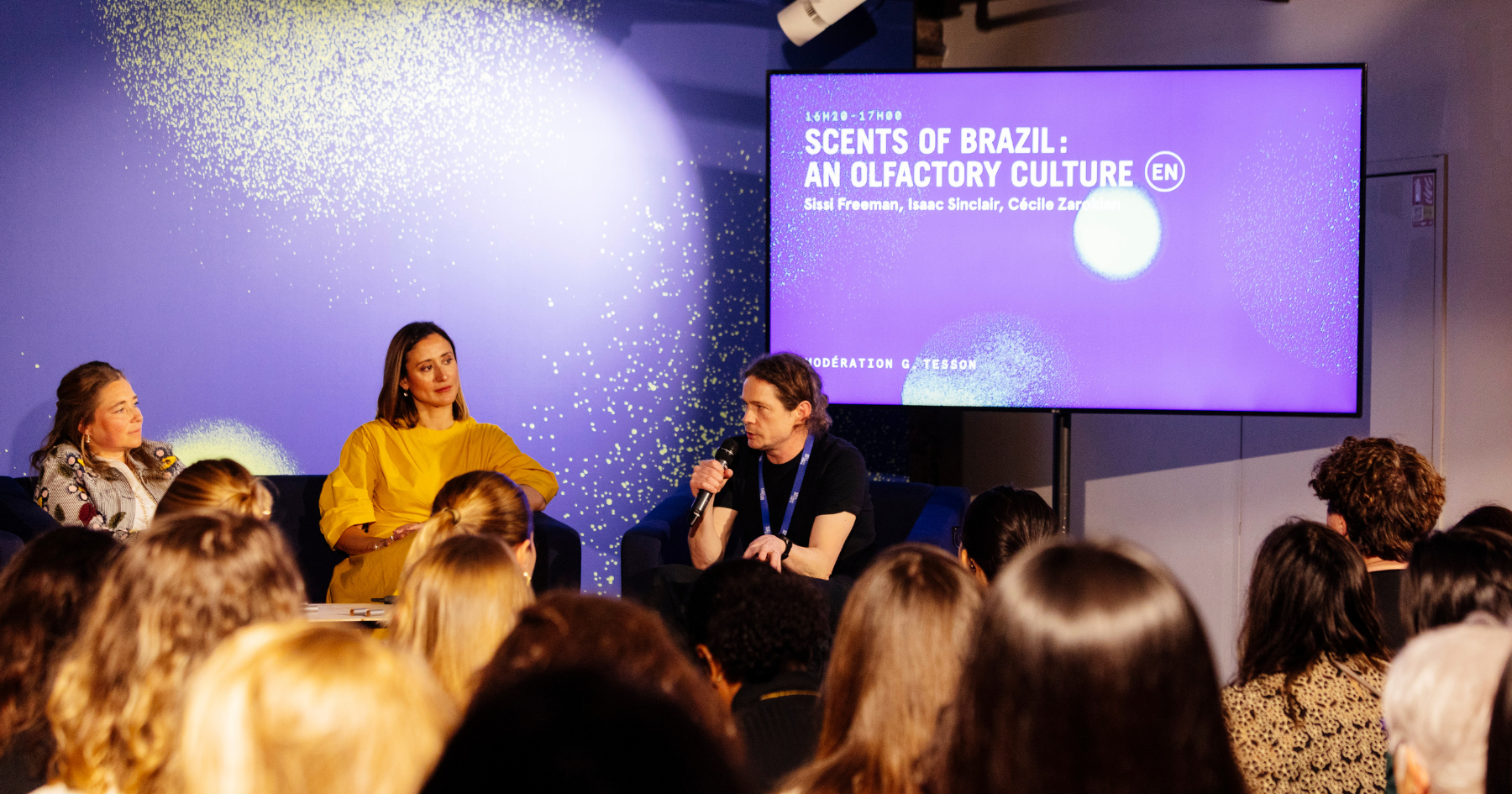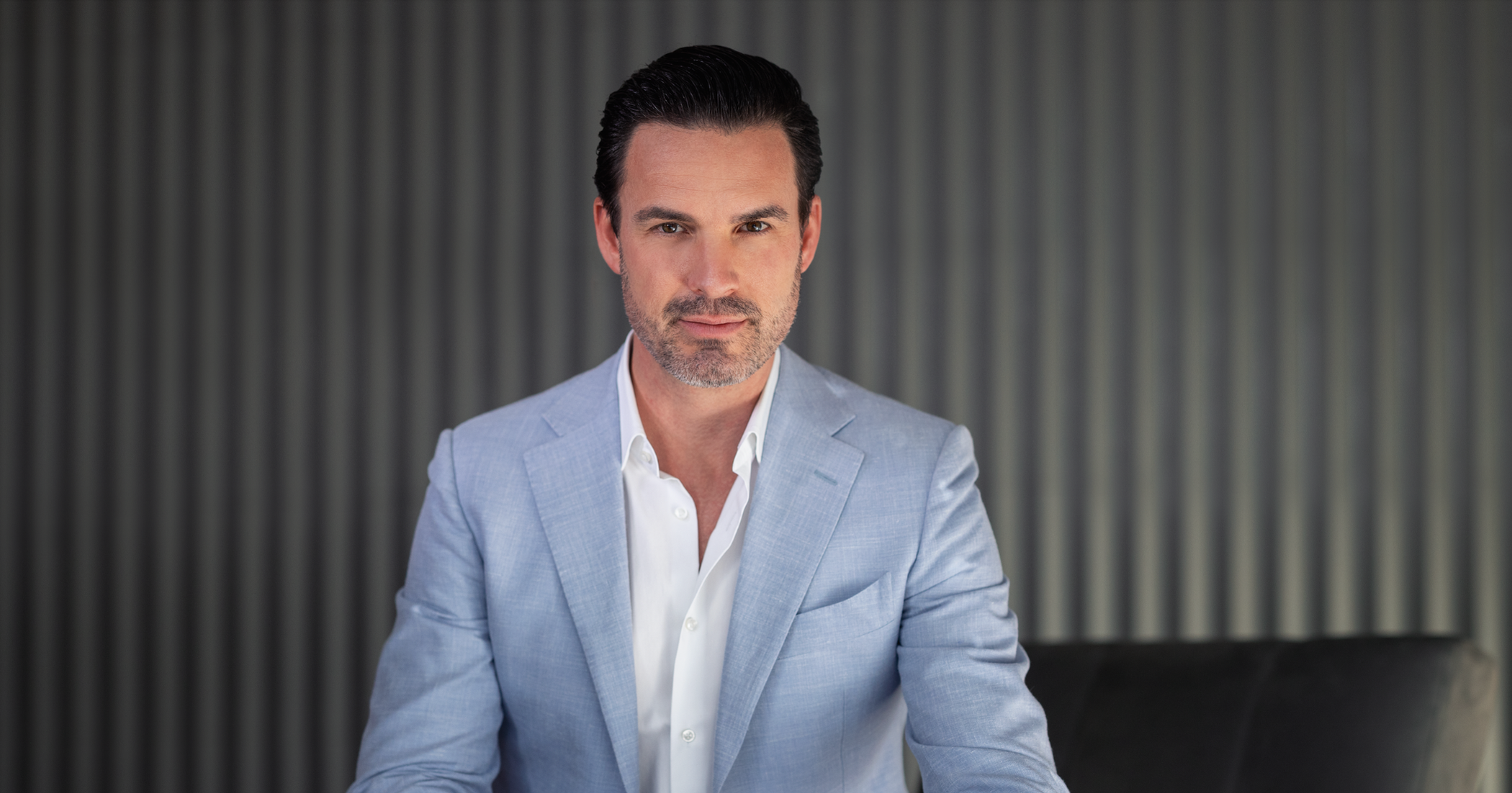Cette publication est également disponible en :
Français
Founded in 1975, Le Jardin retrouvé is one of niche perfumery’s pioneer brands, fruit of the avant-garde vision of its creator Yuri Gutsatz. Clara Feder and Michel Gutsatz, who took over in 2016, bring a real passion to continuing the brand’s legacy.
What were things like back when Yuri Gutsatz chose to launch his own brand?
Michel: The 1970s was a time of enormous creativity in fashion and beauty. My mother, who used to import fabrics from India, was working with brands such as Agnès B., Cacharel and Chantal Thomas, which went on to be big successes. But in the world of perfumery, the only known figures were the bosses and senior executives. In 1979, my father gave a talk in his role as vice-president of the STPF [now the SFP, Société Française des Parfumeurs] entitled “Perfumer, you have no name” as a way of protesting against this situation, pointing out that there was no longer “a perfumery of perfumers, only a marketing perfumery.” In speaking out about this issue and setting up his own brand, he was a real trailblazer for independent creation as we know it today.
Clara: We also came across the minutes of an interview in 1984 where he and Jean Laporte [founder of L’Artisan parfumeur] explained why they were creating a niche, which at the time they called “third-way perfumery” or “parallel perfumery.” Their aim was to restore creators’ freedom and independence, returning fragrance to its place as a craft-led art.
But when you two took over Le Jardin retrouvé, the context had changed. What drove you to relaunch the brand?
Michel: I’ve spent my whole life in a world both my parents were passionate about.. My father was a walking perfume encyclopaedia and my mother had real entrepreneurial flair – I knew that they wanted to build a family tradition. Instead I ended up in a career teaching marketing. But then, in just two and a half years, I lost my mother and both my brothers. It was a real wake-up call: Clara and I didn’t want to see all this legacy lost – we’d inherited around 2,000 formulations from my father. We talked to a few people in the industry and everybody told us the same thing: Le Jardin retrouvé had a real history that we should highlight, the perfumes shouldn’t be locked away in a museum as they were a great fit with what the public wanted.
Clara: Back then we were in the grip of a sort of madness. We set out wide-eyed and naive, but soon realised that reaching the market had become very complicated, that there was a lot of strong competition and that the whole paperwork side of things took up a lot of time. Suppliers were no longer used to unsealed refillable bottles, and finding a suitable screw-on pump, for instance, proved to be a big challenge. And consumers weren’t yet fully up to speed with these types of environmentally responsible practices.
Faced with these difficulties, how did you go about breathing new life into the brand?
Michel: In 2016, when we relaunched seven creations, we turned to by perfumer Maxence Moutte. We met quite by chance at a wedding and he told us how much he admired my father’s work. Working with him just seemed so natural. He pored over the formulas until he felt safe in saying “I think I’ve really understood his olfactory signature.” But in those days nobody really knew us anymore. We had to try something new to get the brand back into people’s minds.
Clara: Maxence ended up choosing four out of the 2,000 formulas bequeathed by Yuri. We produced 500 samples and sent them out to bloggers and our Facebook community so that they could do a blind test to choose their favourite. I made a series of videos about what we were doing, revealing the archives to viewers. Involving the public in this way was a highly innovative step. Oriental sans souci won 47% of all the votes, followed by Bois tabac Virginia. So we were delighted to relaunch them.
More recently, Maxence Moutte has also designed some original creations. How do you work together?
Clara: He has absolute freedom, seeing as he has such a deep feeling for the brand and for Yuri’s signature style, with its focus on rough edges, even though he uses ingredients that weren’t available thirty years ago. And we don’t set any limits on the price.
Michel: It’s a pretty unique set-up: when we first met him, we had to get permission from Givaudan, the composition house he works for, for him to be allowed to create for us. We got it without a problem since back in the day my father used to work for Roure, which later merged with Givaudan. As of 2022, we’ve built an even closer relationship with Givaudan as we now source all our ingredients from them.
During development, Maxence brings us his trials and we question him. We also respect my father’s legacy by offering a whole range of products, just like he used to. For instance, for Mousse Arashiyama the candle came out two years before the eau de parfum. Next will be Osmanthe Liu Yuan, which has also been available as a candle since last year.
What factors do you consider when planning your launches, both for reissues and new compositions?
Clara: The hardest thing about taking on a historical brand is knowing how to make choices. We have two guiding principles: loyalty to Yuri’s olfactory signature and the ability to offer a varied line-up, so that there’s something that speaks to everybody. The first seven reissues, chosen with Maxence, covered the different olfactory families. We then tried to make sure that the range was always as comprehensive as possible. We have worked hard to develop an environmentally friendly perfumery that respects the planet: using the “Road To Clean” process set up in 2021, Maxence has replaced all the bioaccumulative ingredients with others that are harmless to ecosystems and human health. This entails going beyond IFRA regulations (for perfumes sold in Europe certifying that they are harmless to health) and taking things to the next level by applying the Clean Beauty (CREDO Dirty List) standards practiced by avant-garde cosmetics businesses in the USA.
Michel: Maxence knew we needed something ambery so he chose the ones in the archives he felt were the best fit, including Oriental sans souci. We’re trying to build a balanced collection while sticking to our motto: avant-garde as a legacy. Our new products need to resonate with different sensibilities. Mousse Arashiyama is woody with notes that are more aquatic, something we didn’t previously have in our catalogue. Osmanthe Liu Yuan is a floral but with a fruity twist, more suited to tastes in Asian markets.
We use a very large proportion of naturals, which account for 93% to 96% of a finished product. But we’re also conscious of honouring Yuri’s legacy and the tradition of wonderful French perfumery which wouldn’t exist without synthetics.
You started out with online sales only. Why did you make that choice?
Michel: There are two main reasons. First, working in China since 2009 we’ve witnessed there at first hand the impressive rise in perfume sales, most of them online. We think it’s a model that’ll continue to grow, as demonstrated by the pandemic. And back in 2016, the margins distributors were taking were too big, making it hard for brands to survive.
Clara: Online-only perfume sales were pretty unusual at the time so we had to work hard to find ways to get ourselves known, to conjure up the olfactory universe via an emotion-free screen. I thought long and hard about the idea of a “jardin retrouvé” [rediscovered garden], which can be seen variously as a place for quiet relaxation, a person’s inner space, or a planet-wide garden that needs nurturing. For me, the most natural way of expressing this triple notion was through writing, as each perfume has its own story. Also, my film studies helped me to develop the visual and audio dimensions that tie it to the synesthetic realm. So I invented an imaginary garden, entered through a wardrobe just like Narnia. We also set up a reimbursement system for samples, which has since become pretty common.
This year will be your first time at Esxence: what are you hoping for?
Michel: We’d now like our brand to have a presence in bricks-and-mortar stores. In 2020, we rethought our brand identity, reworking the bottles, packaging and logo with the help of an agency called centdegrés. We also create a lot of communications content, along the same lines as the luxury industry. This means that we have a comprehensive identity to show distributors, which is very social-media friendly, for example.
We’re a small brand and we can’t target every market, we have to make choices. We will soon be present in China, Australia and the United Kingdom. Clearly, we’d love to be present in the USA and northern Europe, in Germany, Norway, Sweden and the Baltic countries. It’s a big challenge for us.
—
- Find out more on Le Jardin retrouvé website: lejardinretrouve.com
REPORT « NICHE AND CONFIDENCES »
- Niche perfumery moves centre stage, by Jessica Mignot
- Sylviane Lust (Beauty by Kroonen) : “We choose complex fragrances that evolve on the skin, and that tell you the perfumer has been given a free hand.”, by Jessica Mignot
- Karine Torrent (Floratropia) : “In my view, 100% natural perfumery is the new niche”, by Jessica Mignot
- Barbara Herman (Eris Parfums): “Whether consciously or not, with each new creation I tend to explore a very different path from the previous one”, by Sarah Bouasse
- Serge Laugier (Le Paravent): “It’s important to me to offer the more niche fragrances, because they always have an unique olfactory signature”, by Jessica Mignot
- Cécile Zarokian: “It’s possible to compete successfully with the big fragrance houses”, by Guillaume Tesson
- Pissara Umavijani (Dusita): “The hardest thing for a perfumer is expressing your signature style in different registers”, by Sarah Bouasse
- Clara Feder and Michel Gutsatz (Le Jardin retrouvé): “We’re trying to build a balanced collection while sticking to our motto: avant-garde as a legacy.”, by Jessica Mignot
- Liam Sardea (LKNU): “We try to guide each person to create their own constellation in this vast cosmos”, by Guillaume Tesson
- Dhaher bin Dhaher (Tola): “I’m spending more and more of my time breaking down barriers between olfactory cultures”, by Guillaume Tesson
- Nathalie Feisthauer (LAB Scent): “For me, niche is a definition of beauty”, by Guillaume Tesson
- Franco Wright (Luckyscent): “Ultimately customers see how the niche category pushes fragrance in more interesting directions”, by Anne-Sophie Hojlo
- Luca Maffei (Atelier Fragranze Milano): “Niche perfumery allows me to take risks”, by Jessica Mignot
- Murat Katran and Mert Guzel (Nishane): “Istanbul is literally a bridge between cultures”, by Guillaume Tesson
- Agnieszka Lukasik (Galilu): “Now, the brands come to us”, by Anne-Sophie Hojlo








Comments